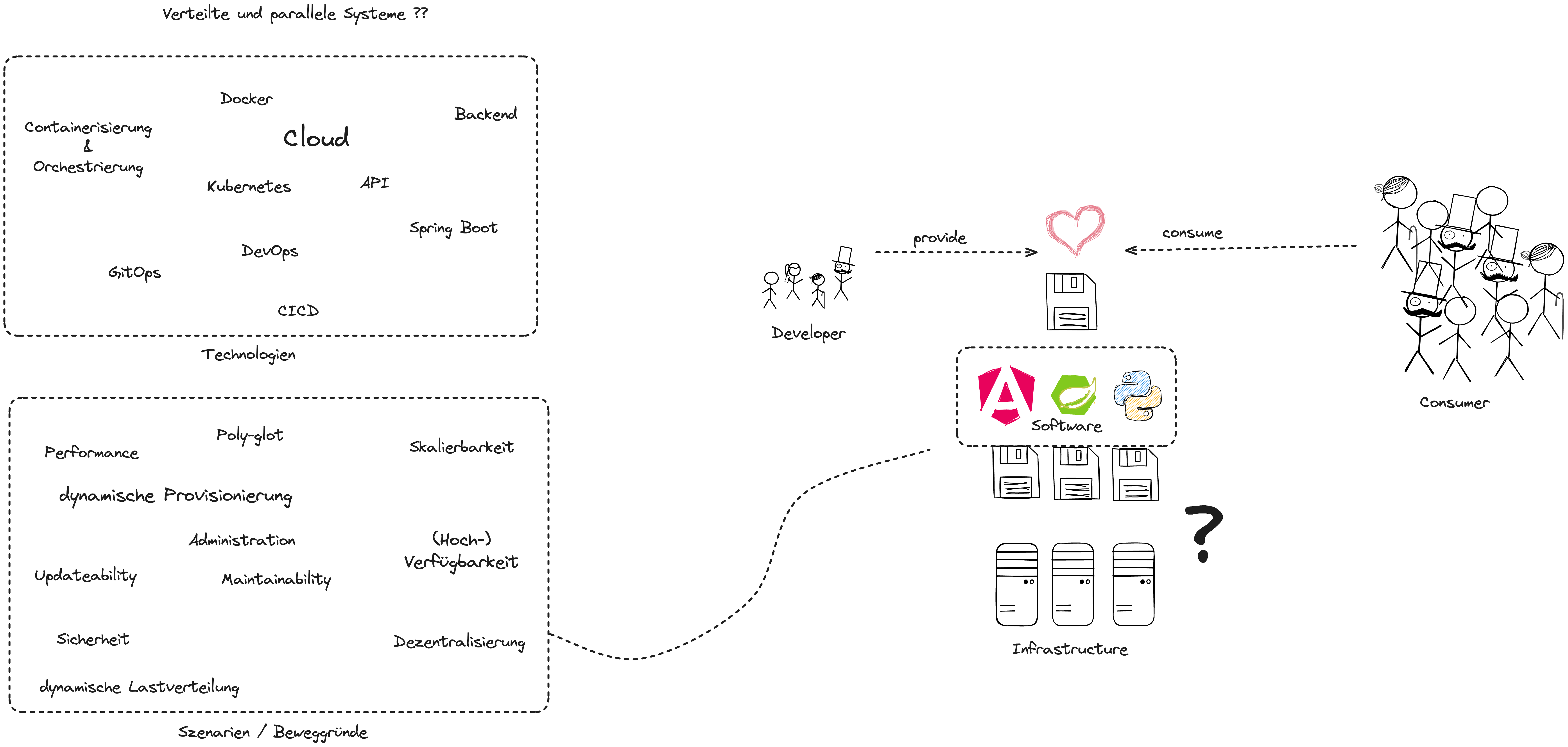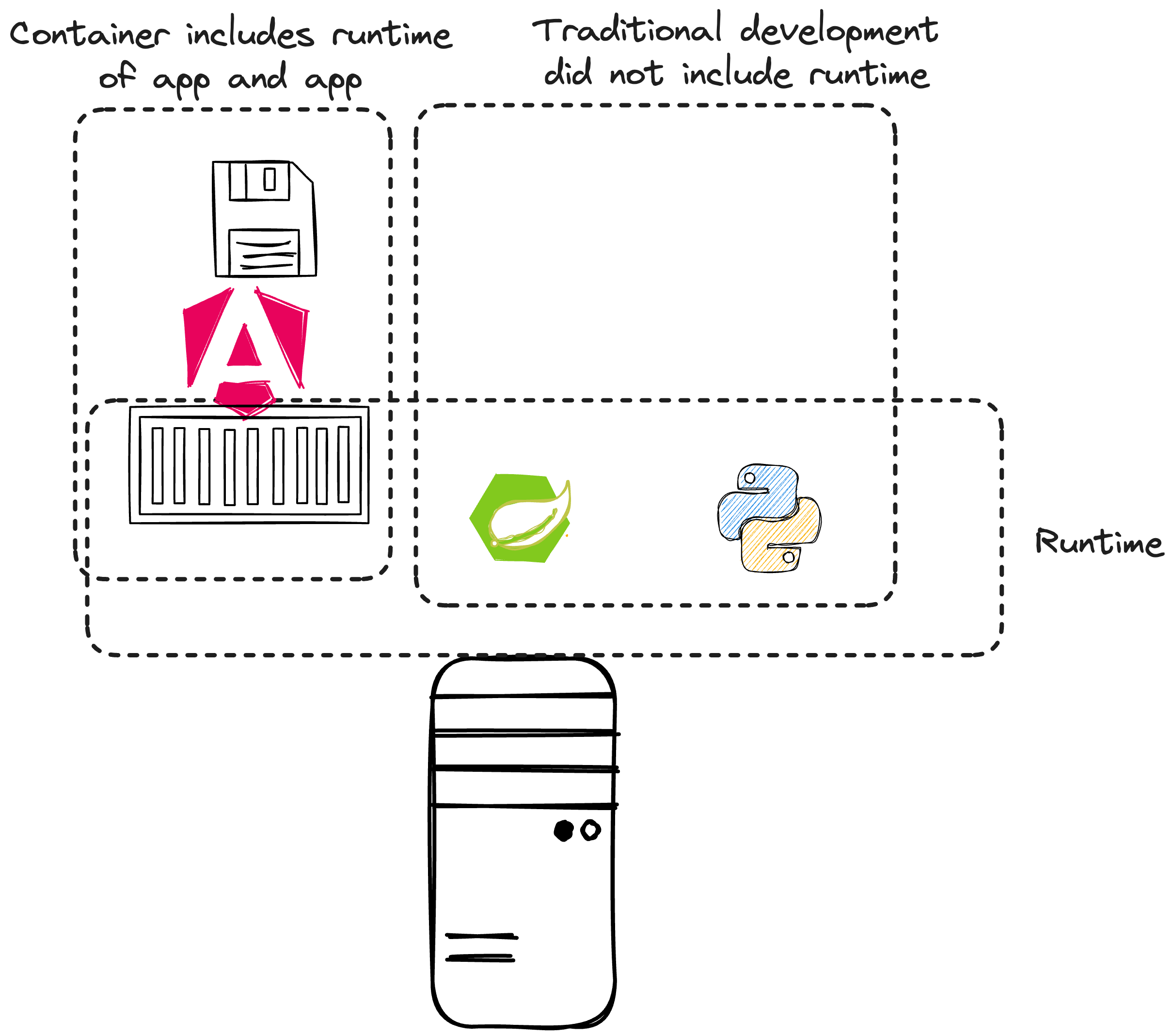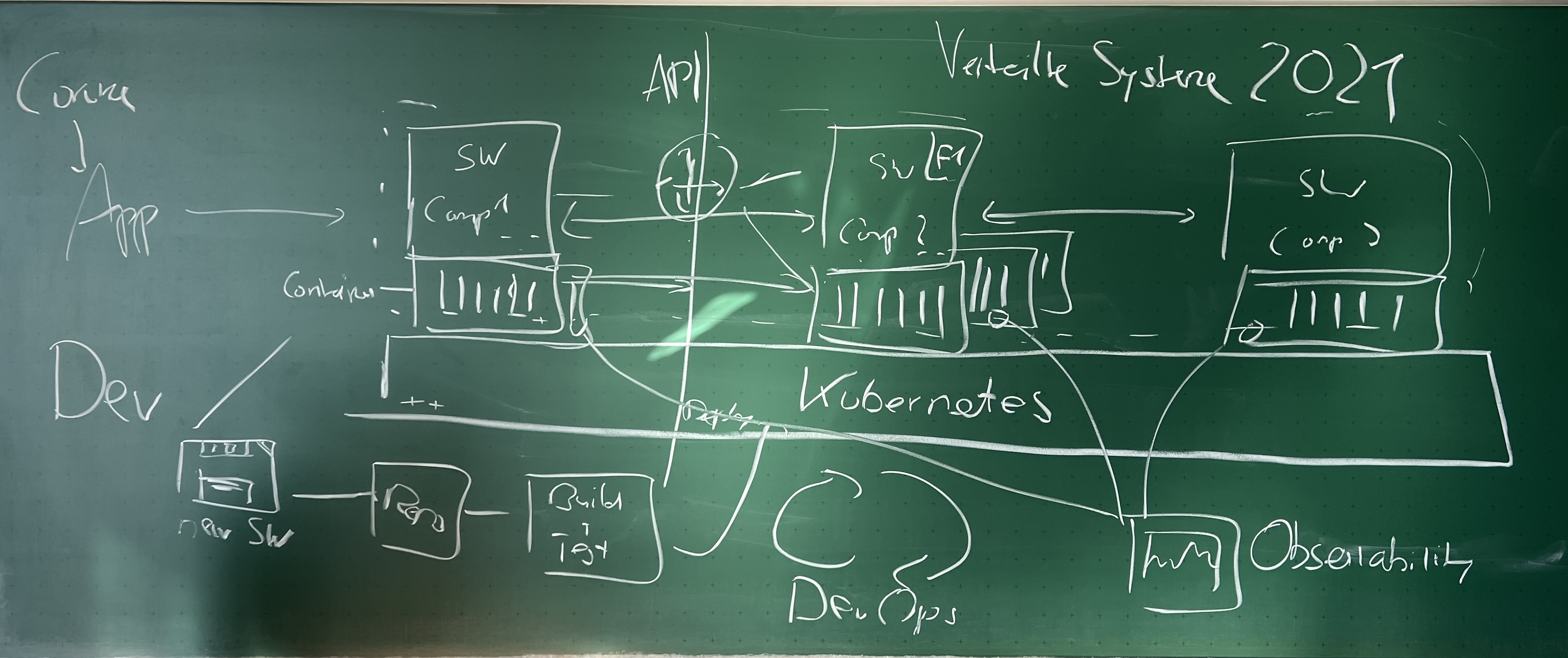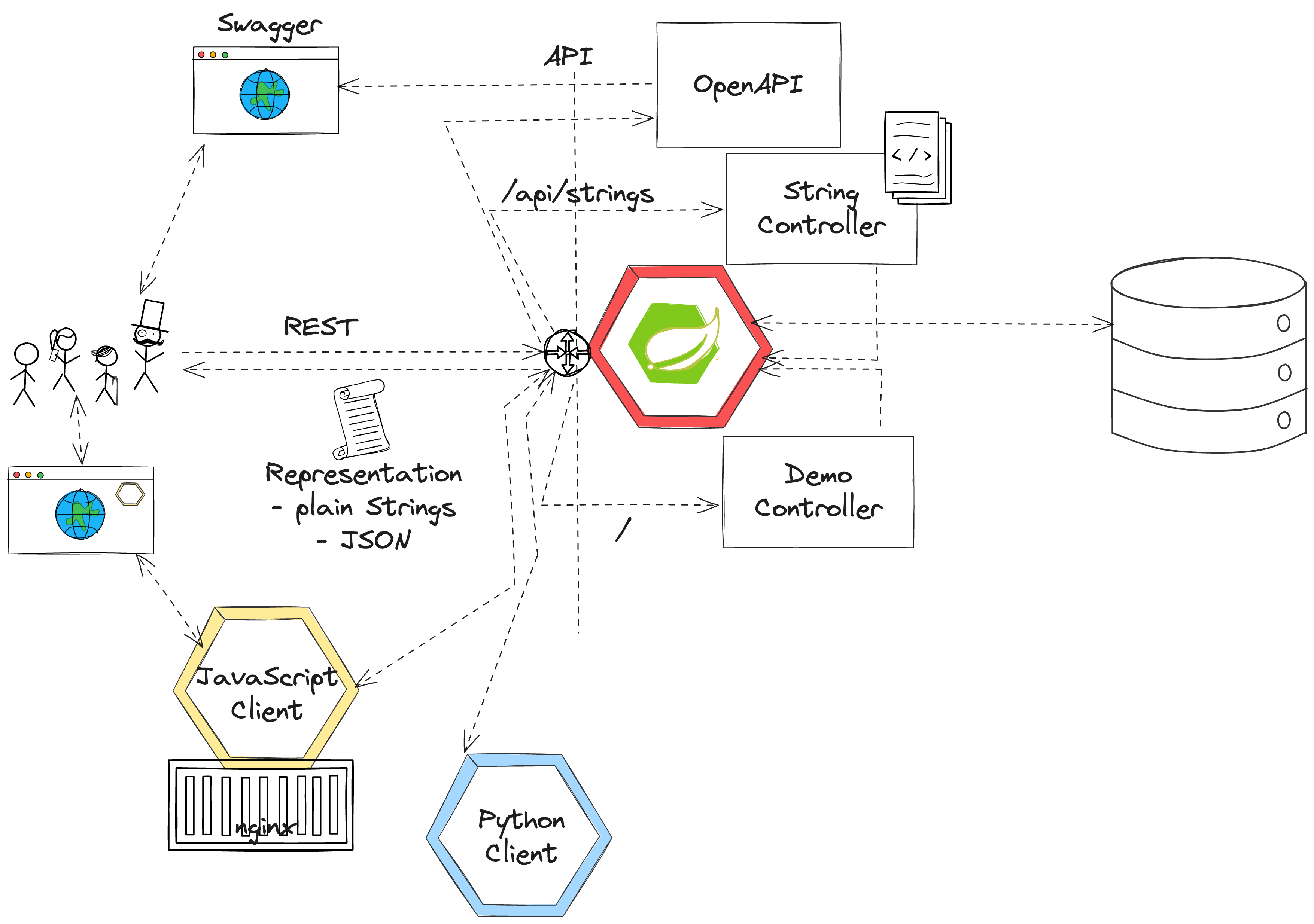- Why distributed systems, why container, why modern software?
- What is Cloud Computing? Encounters in everyday life and history
- Characteristic, advantages & challenges
- Terminology - public, private, hybrid, dedicated
- Abstraction layers - IaaS, PaaS, FaaS, SaaS
- Overview - Hypervisors, virtual machines, containers and orchestration
The student is able to describe the reasons for distributed systems and cloud computing in own words and list examples for offerings, topologies and technologies. Includes ability to differentiate between different abstraction layers and knowledge how those layers and according technologies interact with each other. No exercises in this module
- What is Polyglot Software Development?
- What did the role of containers change for polyglot software?
- Security and Cloud - is it safe? :-)
- Distributed app
- Polyglot implementation
- Containerisation
- Kubernetes
- DevOps/CICD/Observability (optional)
- Get a public GitHub, GitLab or Bitbucket account
- Play around with GitHub codespaces and/or Gitpod
-
Why do we need Containers?
-
Challenges for (polyglot) distributed systems in traditional IT:
- Each environment has to be configured manually: Servers as well as local dev environments
- Configuration has to be as identical as possible: minor configuration drifts can lead to errors and the "it runs on my machine" problem
- Polyglot Server Environments are a huge challenge as for each programing language a separate configuration has to be managed on all systems.
- Changing Versions is tedious for local dev environment
- Whereas containerized Applications bring their own Environment and Configuration
- No need to preconfigure the local environment per programming language or application.
- Only the container engine is required to run all kinds of containers.
- How does the container engine work?
- Layer-based setup of containers
- Container vs Container Image
- How to create a container from application to dockerfile to image to running container
- Do I have to set up, build, and run the dockerfile for each container?
- Can I run multiple applications inside a container?
Exercises can be found here
- Background: Spring Framework - History & components
- Spring ← → Spring Boot
- Spring Initializr (start.spring.io) & starter dependencies
- Basic project structure (folders, configuration ..)
- "Hello, World!" example explained
- Using Actuator
The student is able to build and configure an own Spring Boot application from scratch with the IDE of choice. The exercise is to build an own "Hello, World!" application that exposes various - endpoints and is able to execute CRUD operations on the state of the application. Optional: Add logging and testing, configure Actuator.
- "WHY Spring Boot?" Provide 3 advantages of this framework
- Describe Spring Boot to somebody not familiar with it in own words ()
- How do you start building a Spring Boot app? Initializr & Dependencies
- List 4 different starter dependencies and explain briefly what they do (old question) (4P) "I did not do my lab task with Spring Boot. I implemented using Python and I can tell you how it works there ..."
- https://start.spring.io
- https://www.baeldung.com/spring-requestmapping
- https://www.baeldung.com/spring-boot-actuator-enable-endpoints
- Synchronous communication
- HTTP and REST
- Verbs, Resources, Nouns
- Evolution, Richardson Maturity Model
- CRUD Operations
- Building a REST API with Spring (Boot)
- Building a data model with REST
- Identify good and bad API examples and explain why
- Describe the concepts of Verbs and Nouns
- When is an invocation idempotent and safe? What does it mean? Provide examples
- Describe in your own words the mapping of REST calls to database (SQL) and CRUD calls
The student understands the concepts of an API and synchronous communication in distributed systems and can explain it in own words.
Cloud-native Software development - Theory part
Theory lecture - Cloud-Native Software
- CAP Theorem
- Conway's Law
- Fallacies of distributed computing
- Domain-Driven Design basics (not relevant for exam)
- 12-factor application
- Evolution of applications and deployments: Monolithic -> Service-Oriented Architecture -> Microservices
- Introduction to serverless and FaaS terminology
The student knows about the evolution of distributed systems (and middleware) and the drivers towards state-of-the-art implementation and deployment. She/he can explain the underlying concepts and theories and put it into practical context. No dedicated exercises for this module. Recap of basics: Spring Boot, Docker, configuration.
- "WHY" Cloud-Native Software? What IS Cloud-Native Software?
- Why "evolution" from a monolithic approach to a distributed approach?
- How does the CAP Theorem/Conway's Law relate to this?
- (NO Domain-Driven Design questions)
- How do the 12-factor application "methodology" relate to the technologies that we covered in this semester? (important)
- "WHY" is external configuration important in cloud-native software?
- Where did you see aspects of external configuration in the technologies we used? Provide examples
- What is the advantage of polyglot applications? Why in particular for cloud-native software? What kind of disadvantages do you see?







